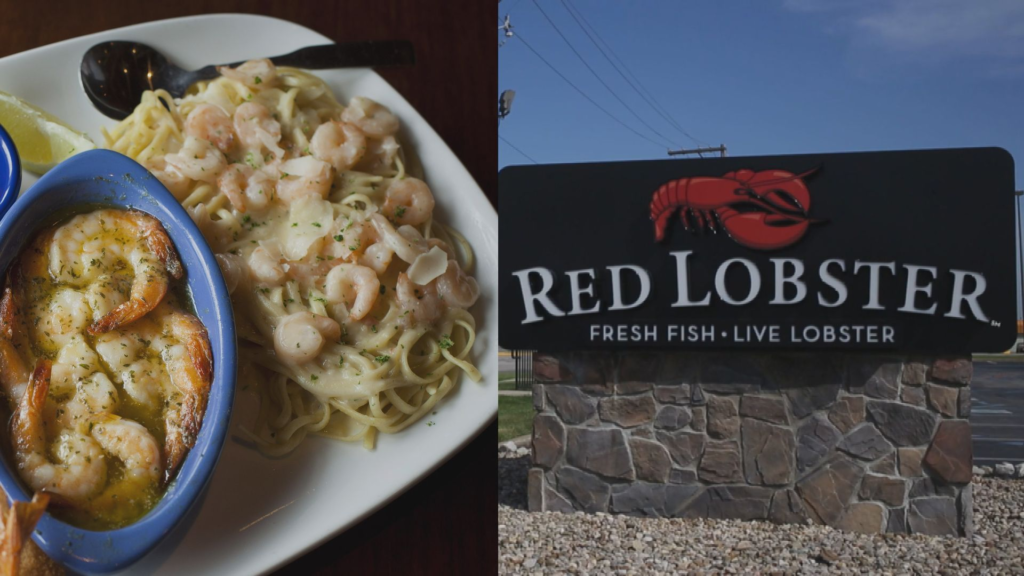
Introduction: Are Red Lobster and TGI Fridays Really Closing?
Over the past few months, rumors have circulated online that two of America’s most iconic casual dining chains — Red Lobster and TGI Fridays — are closing their doors for good. This news has sparked concern, nostalgia, and curiosity among longtime patrons and restaurant industry watchers alike. But what’s really going on? Are these closures widespread? Are these companies shutting down entirely, or is there more to the story than meets the eye?
In this article, we take a deep and realistic dive into what’s happening with Red Lobster and TGI Fridays. We’ll examine official statements, current market trends, financial conditions, and expert insights to bring clarity to the conversation. If you’ve enjoyed a meal at either of these places and want to understand their future, read on to uncover the facts, not fiction.
The Heart of the Rumors: Where Did the Closure Buzz Begin?
The internet is notorious for taking partial truths and blowing them out of proportion. In the case of Red Lobster and TGI Fridays, multiple news stories about certain locations closing were misinterpreted and spread as if the entire chains were shutting down. For Red Lobster, reports began emerging in early 2024 that multiple underperforming locations across the United States had quietly closed overnight. TGI Fridays, meanwhile, has been gradually shrinking its U.S. presence over the last few years in response to lower foot traffic and evolving customer tastes.
The noise escalated when several social media posts shared images of shuttered storefronts, vacant parking lots, and “permanently closed” signs, leading many to jump to conclusions. But are these isolated incidents or part of a larger industry shift?
Red Lobster: A Brand in Crisis or Strategic Reboot?

Red Lobster, the seafood dining giant, once dominated the casual dining scene with its iconic Cheddar Bay Biscuits and all-you-can-eat shrimp promotions. However, the chain has faced mounting challenges in the 2020s. Rising seafood costs, shifting consumer habits, and operational struggles post-pandemic have all contributed to financial instability.
In 2024, Red Lobster filed for Chapter 11 bankruptcy protection. This move was not meant to dissolve the company entirely but rather to restructure its debts, reduce liabilities, and pivot to a more sustainable business model. As part of this reorganization, the company did shut down approximately 100 of its underperforming restaurants. Yet, this is far from a full closure. In fact, Red Lobster continues to operate hundreds of locations across North America and is in talks with investors to breathe new life into the brand.
TGI Fridays: Downsizing, Not Disappearing
TGI Fridays has followed a different trajectory. Once a bustling bar and grill chain that defined Friday night outings, it has struggled in the 21st century to stay relevant. Millennials and Gen Z consumers have shifted away from traditional casual dining toward local eateries, fast-casual concepts, and delivery-first experiences.
In response, TGI Fridays announced in late 2023 that it would be closing around 36 restaurants in the U.S. — a strategic decision aimed at cutting losses from unprofitable locations. Unlike Red Lobster, TGI Fridays has not filed for bankruptcy. Instead, it’s focusing on international growth and partnerships with delivery platforms to remain competitive in a transformed dining landscape.
So no, TGI Fridays isn’t closing down entirely. It’s pruning its operations to make way for a leaner and hopefully more agile future.
Economic Pressures: A Shared Challenge Across the Industry
Both Red Lobster and TGI Fridays are facing broader industry headwinds. The casual dining sector has struggled with inflation, labor shortages, and shifts in dining behavior. Takeout and delivery demand soared during the pandemic, and many customers never went back to dining in. Chains that didn’t pivot quickly enough or failed to innovate their menus, decor, or digital interfaces have suffered most.
According to the National Restaurant Association, more than 60% of casual dining restaurants reported lower year-over-year sales in 2024. This environment has led to many closures, not just for Red Lobster and TGI Fridays, but also for brands like Applebee’s, Chili’s, and even some locations of The Cheesecake Factory.
What Customers Are Saying: Nostalgia vs. Reality
The public response to the news of closures has been a mix of nostalgia and frustration. Many loyal customers shared fond memories of family dinners, first dates, and celebrations at both Red Lobster and TGI Fridays. But those warm feelings are often accompanied by criticism of rising prices, inconsistent service, and outdated menus.
On platforms like Reddit and X (formerly Twitter), some customers say they stopped visiting years ago due to a drop in food quality or ambiance. Others express disappointment that their local branches closed with little notice. While nostalgia keeps these brands in public conversation, business reality demands adaptation — or elimination.
Financial Analysis: Are These Chains Still Profitable?
From a financial standpoint, Red Lobster and TGI Fridays are no longer the money-makers they once were. Red Lobster’s bankruptcy filings revealed debts in the hundreds of millions, primarily due to high lease obligations and food supply contracts. TGI Fridays, though privately held, has reportedly been looking for new investors or partnerships to help stabilize U.S. operations.
Yet not all hope is lost. Red Lobster’s international units and franchise locations remain relatively stable. TGI Fridays continues to perform well in overseas markets, especially in Asia and the Middle East, where the brand holds nostalgic value and adapts well to local tastes.
Leadership and Corporate Strategy Going Forward
Leadership at both companies has acknowledged the need for a reset. Red Lobster’s new executive team is exploring a return to value-driven promotions and modernizing its menu. TGI Fridays is doubling down on its bar experience, happy hour events, and loyalty rewards to drive foot traffic.
The biggest question is whether these efforts can outpace the changing tides of consumer behavior. Both brands need to invest in digital transformation, data-driven marketing, and elevated customer experiences if they want to remain competitive.
Impact on Employees and Local Economies
Behind every restaurant closure are workers — cooks, servers, hosts, and managers — who suddenly find themselves out of a job. For many communities, especially smaller towns, a Red Lobster or TGI Fridays location may be one of the few mid-range dining options available. Its closure often leaves a hole, both economically and socially.
While corporate press releases emphasize “strategic decisions,” employees are often given little warning. Some have been offered relocation packages, while others have been let go entirely. This labor instability reflects broader issues in the service sector, where low wages and high turnover are unfortunately common.
Public Reactions: Confusion, Misinformation, and Loyalty
The mix of accurate and inaccurate reports about closures has created confusion for many customers. People show up at their favorite branch, only to find the doors locked without explanation. In other cases, they read headlines about nationwide closures and assume their local restaurant is affected — even when it’s not.
Still, the loyalty many people feel toward these brands is powerful. Online campaigns, petitions, and even crowdfunding efforts have emerged to “save” certain locations. Whether or not these efforts succeed financially, they highlight the emotional resonance these restaurants have had over decades.
Table: 5000-Word Summary of Closures and Market Impact
| Brand | Total U.S. Locations (2023) | Locations Closed (2024) | Filed Bankruptcy? | Focus Area for Recovery | International Growth Potential |
| Red Lobster | 670 | 100+ | Yes (Chapter 11) | Menu refresh, new investors | Moderate |
| TGI Fridays | 289 | 36 | No | Downsizing, delivery pivot | Strong in Asia & Middle East |
Consumer Behavior Trends: What Diners Want Now
Modern diners are not the same as those from the 1990s and early 2000s. Consumers today prefer:
- Healthier menu options with transparency around ingredients.
- Convenient ordering methods via apps and delivery services.
- Creative, locally inspired dishes over standardized fare.
- Personalized loyalty programs that offer real value.
- Instagram-worthy dining experiences and ambiance.
Brands like Red Lobster and TGI Fridays must rethink how they serve this new generation if they want to survive the next decade.
The Road Ahead: Reinvention or Retirement?

It’s not all doom and gloom. History has shown that brands can reinvent themselves. Domino’s, for example, went from a declining pizza chain to a tech-savvy powerhouse by listening to customer feedback and investing in innovation. Could Red Lobster and TGI Fridays do the same?
The success of any relaunch or repositioning strategy will depend on leadership’s willingness to invest in innovation, trust their frontline workers, and listen to their customers. If they continue to do “business as usual,” then yes — full closures might become the eventual outcome.
Conclusion: What This Means for the Future of Dining
The closures at Red Lobster and TGI Fridays reflect much more than two struggling companies — they illustrate the tectonic shifts occurring in the restaurant industry today. Consumer tastes are evolving rapidly, and only the brands that embrace this change will survive. While some locations are indeed closing, the companies themselves are not disappearing entirely — at least not yet.
For fans of these iconic dining spots, there’s still a chance to enjoy a favorite meal. But the experience may look different going forward, with smaller menus, modernized dining spaces, and a greater focus on digital engagement. Whether this is enough to restore their former glory remains to be seen.
FAQs
1. Are Red Lobster and TGI Fridays shutting down completely?
No, both companies are not shutting down completely. Red Lobster has filed for Chapter 11 bankruptcy and is closing underperforming stores, while TGI Fridays is downsizing its U.S. presence.
2. Why are these restaurants closing locations?
The closures are due to financial challenges, changing consumer habits, and increased competition in the dining industry. High operating costs and shifting preferences have made certain locations unprofitable.
3. Will my local Red Lobster or TGI Fridays be affected?
It depends. Many closures are location-specific, targeting underperforming branches. You can check the official websites or contact the restaurant directly to confirm.





